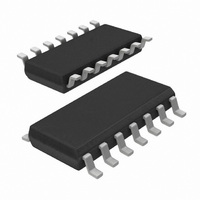TJA1055T/3/C,518 NXP Semiconductors, TJA1055T/3/C,518 Datasheet - Page 6

TJA1055T/3/C,518
Manufacturer Part Number
TJA1055T/3/C,518
Description
IC CAN TXRX FAULT-TOL 14-SOIC
Manufacturer
NXP Semiconductors
Type
Transceiverr
Datasheet
1.TJA1055T3C518.pdf
(26 pages)
Specifications of TJA1055T/3/C,518
Package / Case
14-SOIC (3.9mm Width), 14-SOL
Number Of Drivers/receivers
1/1
Protocol
CAN
Voltage - Supply
4.75 V ~ 5.25 V
Mounting Type
Surface Mount
Product
Controller Area Network (CAN)
Number Of Transceivers
1
Data Rate
125 KBd
Supply Voltage (max)
5.25 V or 40 V
Supply Voltage (min)
4.75 V or 5 V
Supply Current (max)
0.22 mA or 21 mA
Maximum Operating Temperature
+ 125 C
Minimum Operating Temperature
- 40 C
Mounting Style
SMD/SMT
Lead Free Status / RoHS Status
Lead free / RoHS Compliant
Lead Free Status / RoHS Status
Lead free / RoHS Compliant, Lead free / RoHS Compliant
Other names
935285401518
TJA1055T/3/C-T
TJA1055T/3/C-T
TJA1055T/3/C-T
TJA1055T/3/C-T
NXP Semiconductors
TJA1055_4
Product data sheet
Table 4.
[1]
[2]
Failure 6 is detected if the CANL bus line exceeds its comparator threshold for a certain
period of time. This delay is needed to avoid false triggering by external RF fields. After
detection of failure 6, the reception is switched to the single-wire mode through CANH; the
CANL driver is switched off and the RTL bias changes to the pull-up current source.
Recovery from failures 3, 3a and 6 is detected automatically after reading a consecutive
recessive level by corresponding comparators for a certain period of time.
Failures 4 and 7 initially result in a permanent dominant level on pin RXD. After a time-out
the CANL driver is switched off and the RTL bias changes to the pull-up current source.
Reception continues by switching to the single-wire mode via pins CANH or CANL. When
failures 4 or 7 are removed, the recessive bus levels are restored. If the differential voltage
remains below the recessive threshold level for a certain period of time, reception and
transmission switch back to the differential mode.
If any of the wiring failure occurs, the output signal on pin ERR will be set to LOW. On
error recovery, the output signal on pin ERR will be set to HIGH again. In case of an
interrupted open bus wire, this failure will be detected and signalled only if there is an
open wire between the transmitting and receiving node(s). Thus, during open wire
failures, pin ERR typically toggles.
During all single-wire transmissions, EMC performance (both immunity and emission) is
worse than in the differential mode. The integrated receiver filters suppress any HF noise
induced into the bus wires. The cut-off frequency of these filters is a compromise between
propagation delay and HF suppression. In single-wire mode, LF noise cannot be
distinguished from the required signal.
Failure
1
2
3
3a
4
5
6
6a
7
A weak termination implies a pull-down current source behavior of 75 A typical.
A weak termination implies a pull-up current source behavior of 75 A typical.
Description
CANH wire
interrupted
CANL wire interrupted on
CANH short-circuited
to battery
CANH short-circuited
to V
CANL short-circuited
to ground
CANH short-circuited
to ground
CANL short-circuited
to battery
CANL short-circuited
to V
CANL and CANH
mutually
short-circuited
Bus failures
CC
CC
Rev. 04 — 17 February 2009
Termination
CANH (RTH)
on
weak
weak
on
on
on
on
on
[1]
[1]
Termination
CANL (RTL)
on
on
on
on
weak
on
weak
on
weak
Enhanced fault-tolerant CAN transceiver
[2]
[2]
[2]
CANH
driver
on
on
off
off
on
on
on
on
on
CANL
driver
on
on
on
on
off
on
off
on
off
© NXP B.V. 2009. All rights reserved.
TJA1055
Receiver
mode
differential
differential
CANL
CANL
CANH
differential
CANH
differential
CANH
6 of 26













